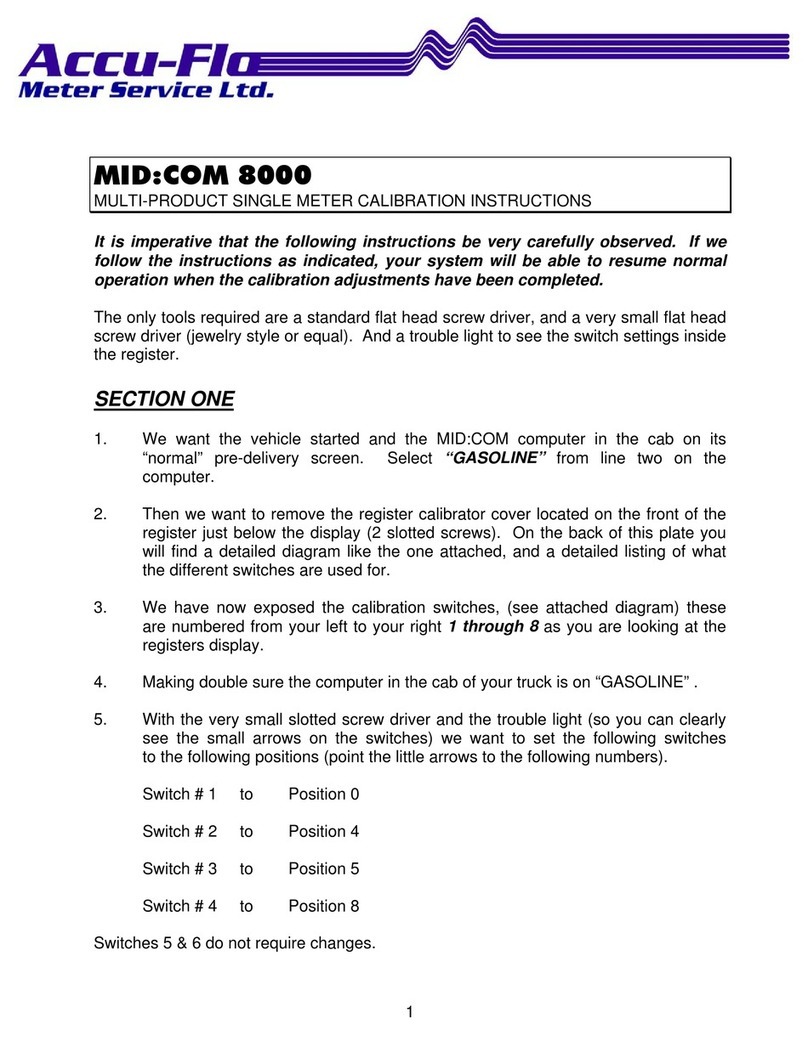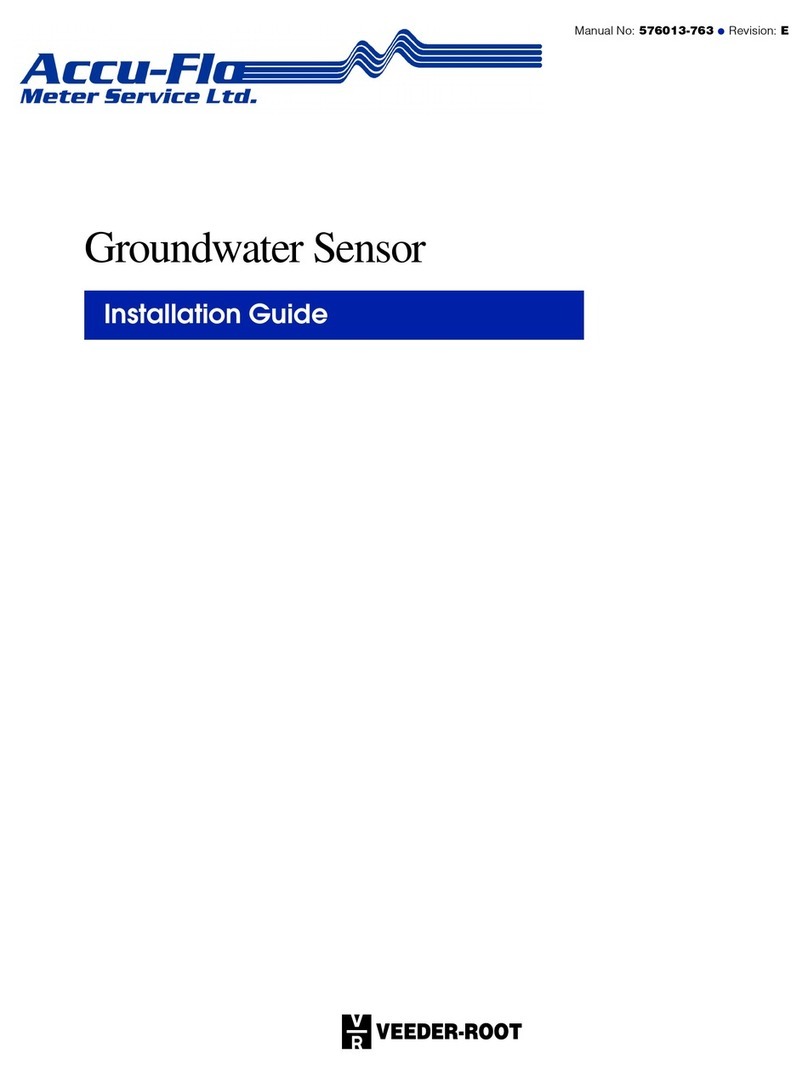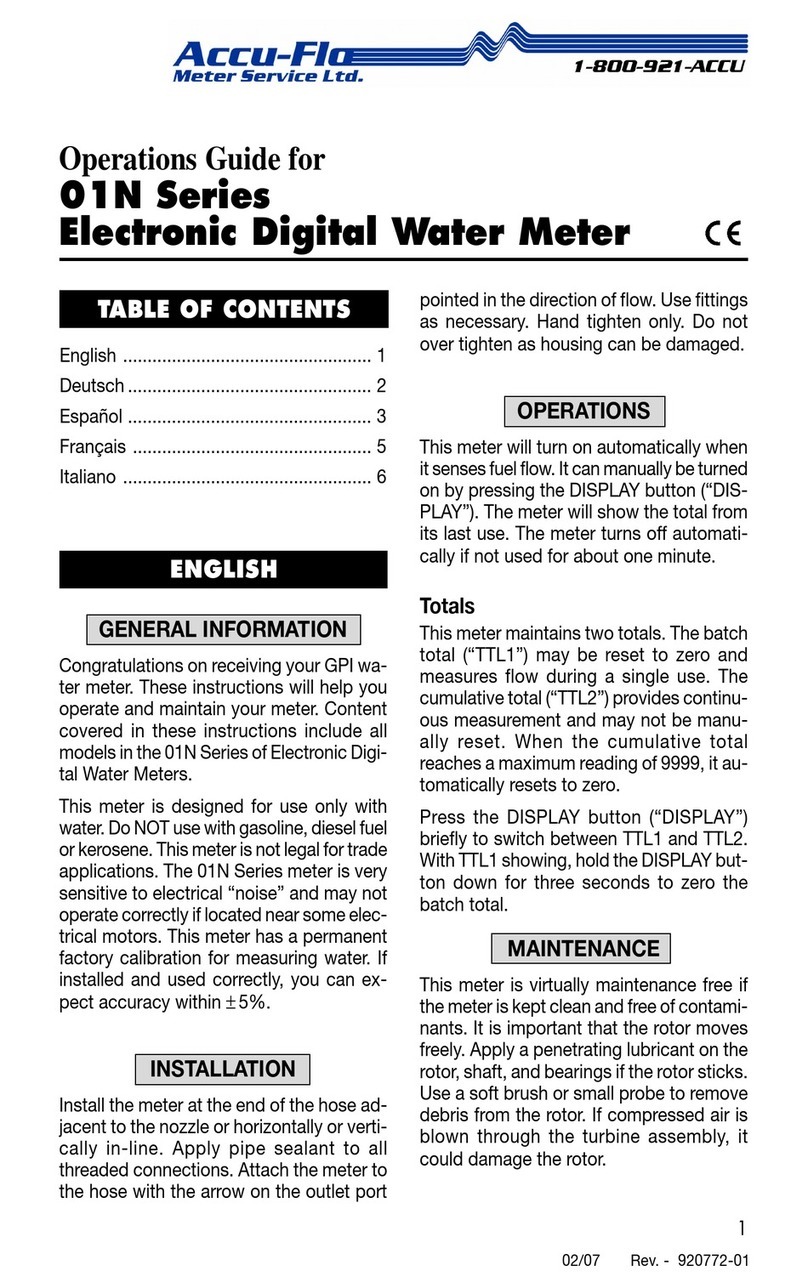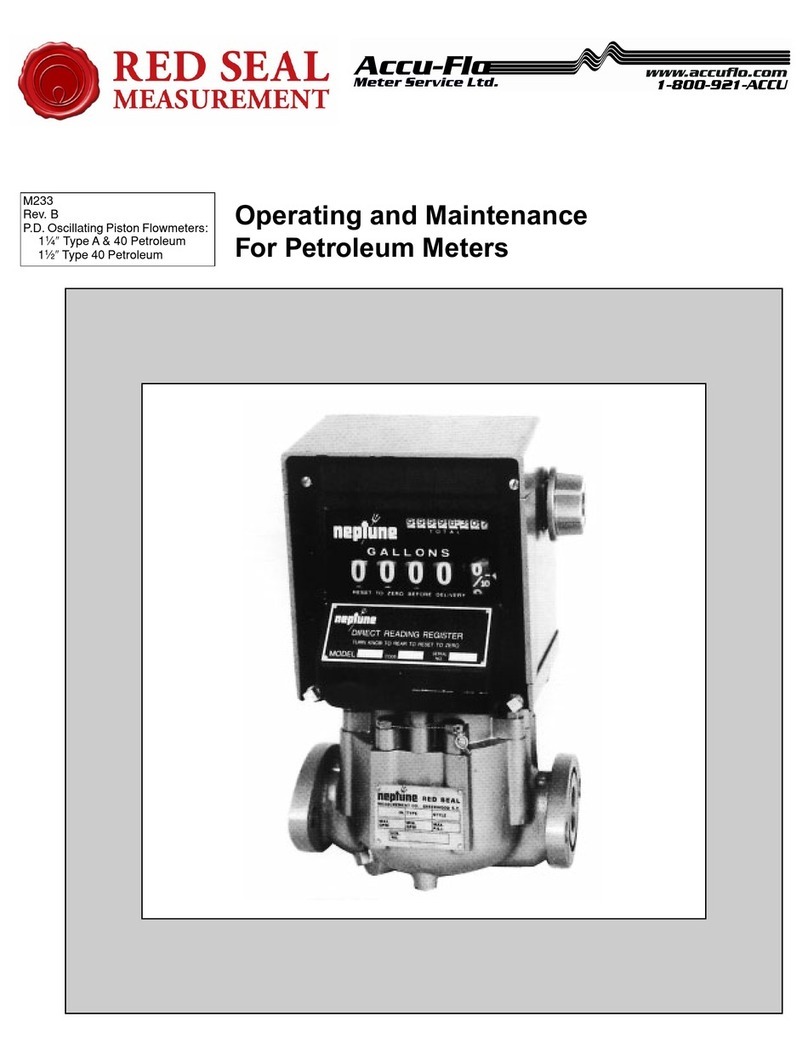
Computer Display –
Batch and Cumulative Totals
The computer maintains two totals. The Cumulative Total pro-
vides continuous measurement and cannot be manually reset.
The Batch Total can be reset to measure flow during a single
use. The Cumulative Total is labeled with TOTAL 1, Batch Total
is labeled TOTAL 2 BATCH.
When the Cumulative Total reaches a display reading of 999,999
the computer will highlight an X10 icon. This indicates to the
operator that a zero must be added to the 6 digits shown. When
the next rollover occurs, the computer will highlight an X100
icon. This indicates to the operator that two zeroes must be
added to the 6 digits shown.
Press the DISPLAY button briefly to switch between the TOTAL
1, TOTAL 2 BATCH and FLOWRATE. Press DISPLAY briefly to
display the TOTAL 2 BATCH. Hold the DISPLAY button for 3
seconds to reset the Batch Total to zero.
When fluid is flowing through the meter, a small propeller icon
is highlighted.
NOTE: Totalization counts total units without differentiating
between gallons, litres or field calibrated units.
Flowrate Feature
To use this feature, press and release DISPLAY until FLOWRATE
icon appears. The factory set time base will be highlighted to the
right of FLOWRATE (M = minutes, H = hours, D = days). When
FLOWRATE is invoked, the display will be indicating rate of flow.
Activate the Meter
Computer is on continuously and always ready to perform. The
computer is powered by a field replaceable battery. When dis-
play becomes dim, faded or the low battery message appears
(see below), the battery needs to be replaced. Reference the
Maintenance Section for details.
Factory and Field Calibration
All calibration information is visible to the user as icons on the
top line of the display, above the numeric digits.
All units are configured with a “factory” calibration. Both gallons
and litres are available (“GL” or “LT” will be displayed). While
holding the CALIBRATE button, briefly press DISPLAY to toggle
between gallons and litres. This factory calibration (indicated
with FAC) is permanently programmed into the computer and
is not user adjustable.
NOTE: Your computer may have other units of measure pro-
grammed into it. If so, holding the CALIBRATE button and
momentarily pressing the DISPLAY button will toggle through
all factory set units. Other possible units are: IGL (imperial
gallon), QT (quart), CF (cubic feet), CM (cubic meter), BL (42
gal. barrel), CC (cubic centimeter) or OZ (ounce).
Switching between different units will not corrupt the Total’s
contents. For example, in GL mode, the computer totalizes
10.00 gallons, if the user switches to LT mode, the display will
read 37.85 litres (the same volume, different unit).
The “field” calibration may be set by the user, and can be changed
or modified at any time using the calibration procedure described
below in the Calibration Section. Totals or flowrate derived from
the field calibration are invoked when the FAC icon is no longer
visible on the top line of the display.
Verify Accuracy Before
Beginning Field Calibration
For the most accurate results, dispense at a flowrate which best
simulates your actual operating conditions. Avoid “dribbling”
more fluid or repeatedly starting and stopping the flow. This
can result in less accurate calibrations.
Make sure you meet the meter’s minimum flowrate requirements:
TM Series Meters
3 inch meter 30 GPM (113.6 LPM)
4 inch meter 40 GPM (151.4 LPM)
The use of a uniformly dependable, accurate calibration con-
tainer is recommended for the most accurate results. Due to
high flowrate, it is strongly recommended that calibration be
completed with a combination of volume and weight using fine
resolution scales.
For best results, the meter should be installed and purged of
air before field calibration.
Field Calibration with
Computer Display
Field Calibration and Factory Calibration are defined in the Op-
eration Section. Factory calibration settings are programmed
into each computer during manufacturing, using water at 70° F
(21° C). Readings using the Factory Calibration (FAC) may not
be accurate in some situations, for example, under extreme
temperature conditions, non-standard plumbing configurations
or with fluids other than water.
Field Calibration Procedures
(Correction Factor Method)
1. To calibrate, press and hold the CALIBRATE and DISPLAY
buttons for about 3 seconds until you see FLdCAL. Release
both buttons and you will see CF - 00.0. You are now in the
field calibration mode and values from -99.9% to +99.9%
can be entered.
2. The +/– position appears either as an “underscore” char-
acter for plus, or as a “hyphen” character for minus. The
DISPLAY button selects the position and the CALIBRATE
button toggles this character.
3. The DISPLAY button can then be pushed to select the
numeric positions. Press the CALIBRATE button to scroll
from 0 to 9. Enter the percentage of change you want the
display to correct. When satisfied with the value, press both
CALIBRATE and DISPLAY buttons simultaneously. CALEnd
will be displayed and unit will go back to normal operation,
less the FAC (factory calibration) icon.
CALIBRATION
4
OPERATION































